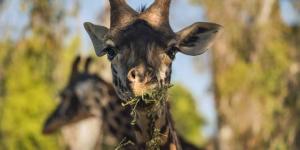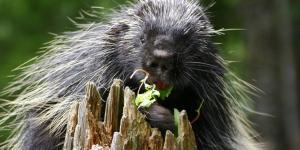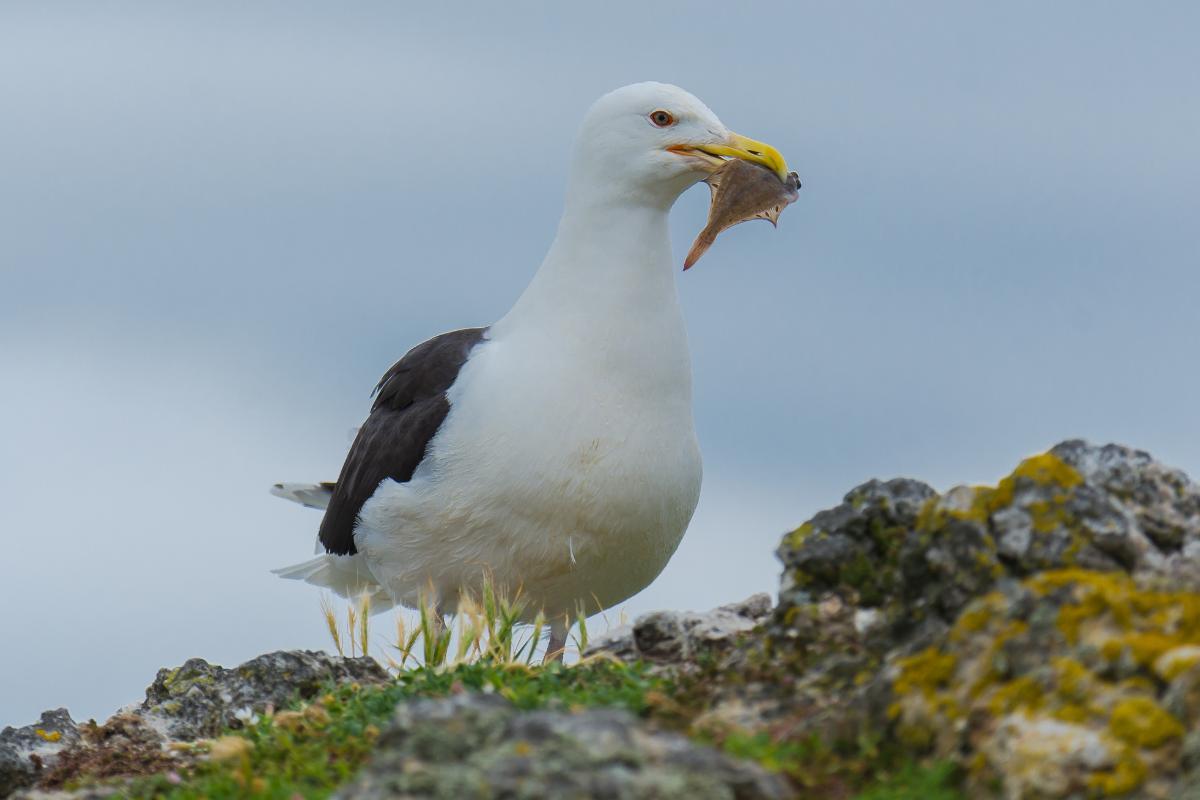What Do Seagulls Eat?


Seagulls, with their graceful flight and characteristic calls, are a common sight along coastlines and inland bodies of water. These versatile avian creatures have adapted to a diverse range of habitats, displaying remarkable flexibility in their feeding habits. But have you ever wondered what seagulls actually eat? Beyond their reputation as opportunistic scavengers, seagulls have a fascinating dietary repertoire that encompasses a variety of food sources.
In this Animalwised article, we delve into the question of what do seagulls eat, exploring the wide array of foods that these coastal birds consume to sustain themselves.
How do seagulls feed?
The feeding habits of seagulls are highly adaptable and versatile, allowing them to thrive in various environments. These birds exhibit a combination of hunting, scavenging, and opportunistic feeding behaviors.
Seagulls are skilled hunters and excel at capturing a wide range of prey. They are known to dive into the water to catch fish, swoop down to grab small marine invertebrates such as crabs and shrimp, or snatch unsuspecting rodents and insects on land. Their sharp beaks and agile flight make them efficient predators.
In addition to hunting, seagulls are opportunistic feeders. They take advantage of available food sources in their surroundings. For example, in coastal areas where human activities are prevalent, seagulls eagerly scavenge for discarded food scraps or leftovers. Tourist centers or fishing harbors are common hotspots for such opportunities.
Seagulls also exhibit a level of dietary versatility by incorporating plant matter into their meals. They may feed on various types of vegetation, including seeds, berries, and even agricultural crops in coastal regions. This omnivorous behavior enables them to supplement their diet when prey is scarce or inaccessible.
Are seagulls scavengers?
Yes, seagulls are indeed scavengers. While they possess hunting skills and are capable predators, they also display scavenging behavior as part of their feeding habits. Seagulls take advantage of various food sources, including carrion and the remains of dead animals.
This scavenging behavior is particularly prominent in areas where there is easy access to discarded food, such as coastal regions with tourist activity or places where people leave food scraps. Seagulls capitalize on these opportunities to fulfill their dietary needs.
Furthermore, seagulls have the ability to access locations that may be difficult for other animals to reach. In maritime areas with rocky terrain, cliffs, or remote coastal environments, seagulls can locate and consume carrion, including other dead birds or remains left by other avian species.
Discover more in-depth information about the omnivorous diet in our other article.
What do baby seagulls eat?
Seagulls are birds dedicated to caring for their young, and both parents are actively involved in incubating, caring for, and raising the chicks. They form long-lasting couples, even for life.
When baby seagulls are born, they are entirely dependent on their parents for food. The parents bring small fish, larvae, or insects as their primary source of nourishment. It is common for the parent to consume the food first and then regurgitate it to make it easier for the chicks to feed.
As the chicks grow older and become more independent, their parents gradually introduce solid food into their diet. This includes small fish and marine invertebrates like crabs, shrimp, and mollusks. The parents may bring back whole or partially consumed prey for the chicks to consume.
Additionally, baby seagulls also take advantage of opportunistic feeding, similar to adult seagulls. If there are readily available food sources nearby, such as discarded fish or food scraps, the chicks may consume these items as well.
It's important to note that baby seagulls heavily rely on their parents for feeding until they develop the skills to forage on their own. As the chicks grow and their flight feathers develop, they gradually gain independence and the ability to seek out and capture their own food.
The specific diet of baby seagulls may vary depending on the availability of prey in their habitat and the foraging abilities of their parents. The parents play a vital role in providing a diverse and nutritious diet to ensure the healthy growth and development of their offspring.

What do adult seagulls eat?
Adult seagulls have a diverse and adaptable diet, allowing them to thrive in various coastal and inland habitats. Their diet primarily consists of the following:
- Fish: fish make up a significant portion of the adult seagull's diet. They are skilled at capturing a wide range of fish species, including small coastal fish like herring, anchovies, and sardines. Seagulls employ different hunting techniques, such as aerial diving or surface dipping, to catch fish.
- Marine invertebrates: seagulls also feed on a variety of marine invertebrates found along the coast. They consume crustaceans like crabs, shrimp, and small lobsters. Additionally, seagulls target mollusks such as clams, mussels, and snails, using their beaks to pry open shells and access the soft flesh inside.
- Birds and eggs: some seagull species have a predatory nature and opportunistically prey on smaller birds, their eggs, or nestlings. They may raid the nests of other seabirds, such as terns or puffins, to steal eggs or young chicks.
- Insects and invertebrates: seagulls supplement their diet with a variety of insects and invertebrates found in coastal areas and open fields. They feed on worms, beetles, grasshoppers, and other terrestrial insects, as well as marine insects like flies or larvae.
- Carrion and scavenging: seagulls are opportunistic scavengers and readily consume carrion, including the remains of dead animals. They scavenge on the shoreline, fishing piers, or garbage dumps, taking advantage of food scraps or discarded waste. They may also scavenge from human activities, such as picnics or outdoor dining areas.
- Plant matter: while the primary focus of their diet is animal-based, seagulls also incorporate plant matter into their meals. They consume seeds, berries, and even agricultural crops in coastal regions, especially when other food sources are scarce.
The specific composition of an adult seagull's diet can vary based on their environment. However, without a doubt, their adaptability and opportunistic feeding behavior allow them to survive in a range of environments, making the most of the resources available to them.

How do seagulls hunt?
Seagulls employ various hunting techniques to capture their prey, utilizing their physical adaptations and keen senses. Here is an overview of how seagulls hunt:
- Aerial hunting: seagulls are skilled aerial hunters. They have excellent vision, allowing them to spot prey from a distance. When hunting in the air, seagulls soar or hover above the water, scanning the surface for signs of fish or other small marine creatures. Once they spot a potential target, they dive swiftly and plunge into the water to catch their prey.
- Surface diving: seagulls are proficient at surface diving. They can dive headfirst into the water from either a hovering or perched position. Surface diving is particularly effective when targeting fish or small invertebrates near the water's surface. Seagulls use their sharp beaks to snatch their prey as they dive or swim close to the surface.
- Opportunistic foraging: seagulls are opportunistic feeders and take advantage of various food sources. They often search for food along coastlines, where they scavenge for marine invertebrates, crustaceans, mollusks, and small fish that have washed ashore. They may also feed on insects, worms, or other organisms found in coastal areas or open fields.
- Intertidal feeding: seagulls are known to forage in intertidal zones, which are the areas exposed during low tide and covered during high tide. They walk or wade through shallow water, probing the sand or mud with their beaks in search of buried prey such as clams, worms, or small crustaceans.
- Pirate behavior: seagulls are notorious for their "pirate" behavior, where they steal food from other birds or animals. They may harass other seabirds, such as pelicans or terns, to snatch their catch. Seagulls also scavenge from fishing boats, piers, or picnic areas, taking advantage of human activities and food scraps.
Their adaptability, sharp vision, and agile flight allow them to employ a combination of aerial hunting, diving, opportunistic foraging, and intertidal feeding techniques to secure their meals.
Don't miss our other article, where we delve into greater detail about the various types of seagulls that exist.
If you want to read similar articles to What Do Seagulls Eat?, we recommend you visit our Healthy diets category.
- Ingolfsson, A., & Estrella, BT (1978). The development of shell-cracking behavior in herring gulls. The Auk , 577-579.
- Myers, P.; Espinosa, R.; Parr, CS; Jones, T.; Hammond, G.S.; Dewey, T. A. (2023). The Animal Diversity Web. Available at: https://animaldiversity.org/search/?q=larus&feature=INFORMATION







